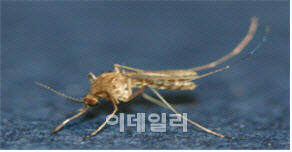One out of two mosquitoes found in Gyeongnam and Jeonnam is a small red house mosquito.
Most cases are reported between August and September, with occurrences continuing until November., ‘[Edaily E Ji-hyun] A Japanese encephalitis alert has been issued nationwide.’,
,
, ‘According to the Korea Disease Control and Prevention Agency, on the 24th of last month (30th week), the small red house mosquito, a carrier of Japanese encephalitis, was confirmed in Gyeongnam and Jeonnam to account for 63.2% (2456 out of 3884 mosquitoes) and 58.4% (1684 out of 2878 mosquitoes) of all mosquitoes, respectively, prompting an ‘alert’ to be issued on the 26th.’,
,
,
|
, ‘This year, a caution is issued when the small red house mosquito is collected for the first time. An alert is issued when △ the average number of small red house mosquitoes is 500 or more per day of mosquitoes collected twice a week, accounting for 50% or more of the total mosquito density △ the Japanese encephalitis virus is isolated from the collected mosquitoes △ the Japanese encephalitis virus gene is detected, etc. The alert for Japanese encephalitis this year was issued in the same week as last year, on the 27th of July.’,
,
, ‘The mosquito known as the carrier of Japanese encephalitis, the ‘small red house mosquito,’ is distributed throughout Asia. It is a small mosquito overall with a dark brown color, no distinct patterns, and a wide white band in the middle of the proboscis. It inhabits paddies, animal sheds, puddles, etc., and mainly performs blood-sucking activities at night. It is observed to peak in mosquito density in August and September and continue activities until late October.’,
,
, ‘When infected with the Japanese encephalitis virus, mild symptoms such as fever and headache mainly occur, but in rare cases, severe symptoms such as high fever, seizures, stiff neck, confusion, convulsions, and paralysis can manifest if it progresses to encephalitis. 20-30% of cases may result in death. Particularly, even if the symptoms recover when progressing to encephalitis, 30-50% of patients may experience various neurological complications depending on the affected area.’,
,
, ‘In South Korea, about 20 cases of Japanese encephalitis occur annually, with most cases reported between August and September and occurring until November. Over the past five years (2019-2023), among the 91 patients reported with Japanese encephalitis, those in their 50s and older accounted for 87.9% (80 people) of the total patients. By region, cases occurred in the order of Gyeonggi, Seoul, and Gangwon.’,
,
, ‘Clinical symptoms appeared in the order of fever, altered consciousness, encephalitis, and headache. Complications such as cognitive impairment, motor impairment, paralysis, and speech impairment were confirmed in 73.6% (67 out of 91 patients) of all patients.’,
,
, ‘There is an effective vaccine for Japanese encephalitis. The Korea Disease Control and Prevention Agency recommends that those born after 2011, who are eligible for national immunization support, should be vaccinated according to the standard immunization schedule. Additionally, for adults aged 18 and older without a history of Japanese encephalitis vaccination, the agency recommends vaccination for those △ residing in high-risk areas (near paddies, pigsties) or planning to engage in activities in high-risk areas during the transmission season △ moving to South Korea from non-endemic areas to reside long-term △ travelers to Japanese encephalitis endemic countries (Bangladesh, Bhutan, India, Nepal, Pakistan, Sri Lanka, Brunei, Myanmar, Cambodia, Indonesia, Laos, Malaysia, the Philippines, Singapore, Thailand, Timor-Leste, Vietnam, China, Japan, Taiwan, Russia, Australia, Papua New Guinea), among others.’,
,
, ‘Director Ji Young-mi of the Korea Disease Control and Prevention Agency emphasized, “During the summer, outdoor activities increase the risk of exposure to Japanese encephalitis mosquitoes, so special caution should be taken to avoid mosquito bites” and urged, “Those eligible for vaccination should get vaccinated according to the schedule.”’,
,
,


